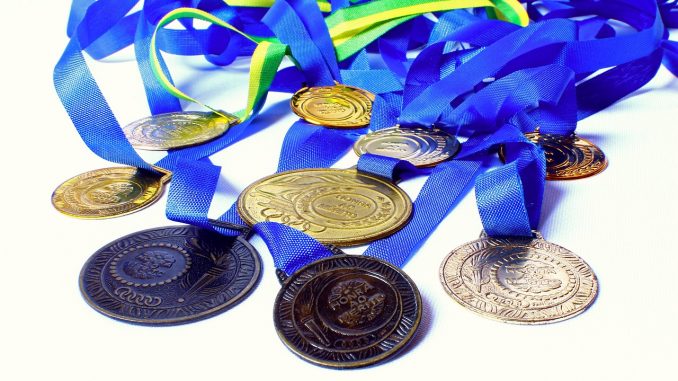
From February 9th to the 25th people the Korean city of Pyeongyang hosted the Winter Olympics. This is an exciting event that unites different people in the name of sports. For two weeks athletes from all over the world skated, skied and played other sports for millions of spectators around the world.
What is the History of Olympic Medals?
The Olympic gold medal symbolises the ultimate achievement in the world of sports. It means you are the best, the number 1 athlete in a particular sport in the world. The Olympic games were first played in Greece from 776 BC and continued on until 393 AD. There was a long break after that. The modern Olympics were reborn in Greece in 1896 and after that they were held every four years in various countries around the world.
Athletes who make it to the Olympic games are usually the best athletes in their respective sports. They all want to win and bring the gold medal back home. When the modern games resumed in 1896, the winners were given silver medals and the second and third best athletes each received a bronze medal. Things changed four years later.
In 1900, athletes were awarded trophies instead of medals. It was only in the 1904 games that athletes were given medals. The winner got an actual gold medal whilst the second and third athletes got silver and bronze respectively. At the Stockholm Olympics of 1912, the gold medal was changed from pure solid gold medal to a medal made of gilded silver.
The 2018 Winter Olympic Medal
The South Korean Winter Olympic committee in Pyeongchan commission, Lee Suk-wok to design the medals. According to the designer, he was inspired by the texture of tree trunks. There are diagonal lines that stretch across the metal’s face and form consonants around the edges. These spell out “Olympic Winter Games Pyeongchan 2018” in the Korean Hangeul alphabet. The other side of the coin features the official Olympic ring logo. The back of the coin has the Pyeongchan 2018 emblem and the sporting discipline the athletes participated in.
The South Korean committee used a traditional South Korean fabric to make the teal and pink ribbon that is used to attach the medal. This fabric is also embroidered with Hangeul characters and other patterns. For these Olympic games, there are 259 sets of medals. The gold medals are made with 99.9% silver and plated with about 6 grams of gold. The gold medal weighs about 586 grams. The silver medal is made of 99.9% pure silver and weighs 580 grams. The last medals the bronze medals are made of 9 percent copper and 70% zinc and weigh 493 grams. Essentially, despite the number of gold medals that were to be given to athletes, only 55 ounces of gold was used to make the gold medals, but about 9_659 ounces silver was used to produce gold and silver medals.
Olympic Medal Value
Winning an Olympic medal is more valuable to the athlete that the precious metal. When athletes get to the Olympics they are not thought about winning a precious metal, but winning and being acknowledged for being the best of the best on an international stage. The medal might not be valuable when sold to a precious metal dealer, but it has immense value to the athlete.
However, if we had to break down the value of the precious metal, then according to the composition of this year’s composition, a gold medal would be worth about $608. Competitive athletes will view the value of their medal as a culmination of the hard work and sacrifice they had to do through get to a certain point. The Olympics are the pinnacle of their career. For a lot of athletes a gold medal might lead to endorsement deals and other opportunities to cash in on winning a specific event. This isn’t always the case though, especially for less popular sports like curling for instance.
There are people who collect Olympic medals and are willing to pay to dollar. Gold medals can sell for as much as $10,000 at auction. Just like coins, some medals are priced higher depending on how old they are and what historical significance they had. For instance, the gold medals that US runner Jesse Owens won in 1936 were sold in 2013 to a private collector for $1.47 million.
The bottom line is that Olympic medals are valuable regardless of the gold content because they symbolise something more that very few people will attain in their lifetime.
Sources:
https://en.m.wikipedia.org/wiki/Olympic_medal
http://money.com/money/5106062/how-much-olympic-gold-medal-worth/